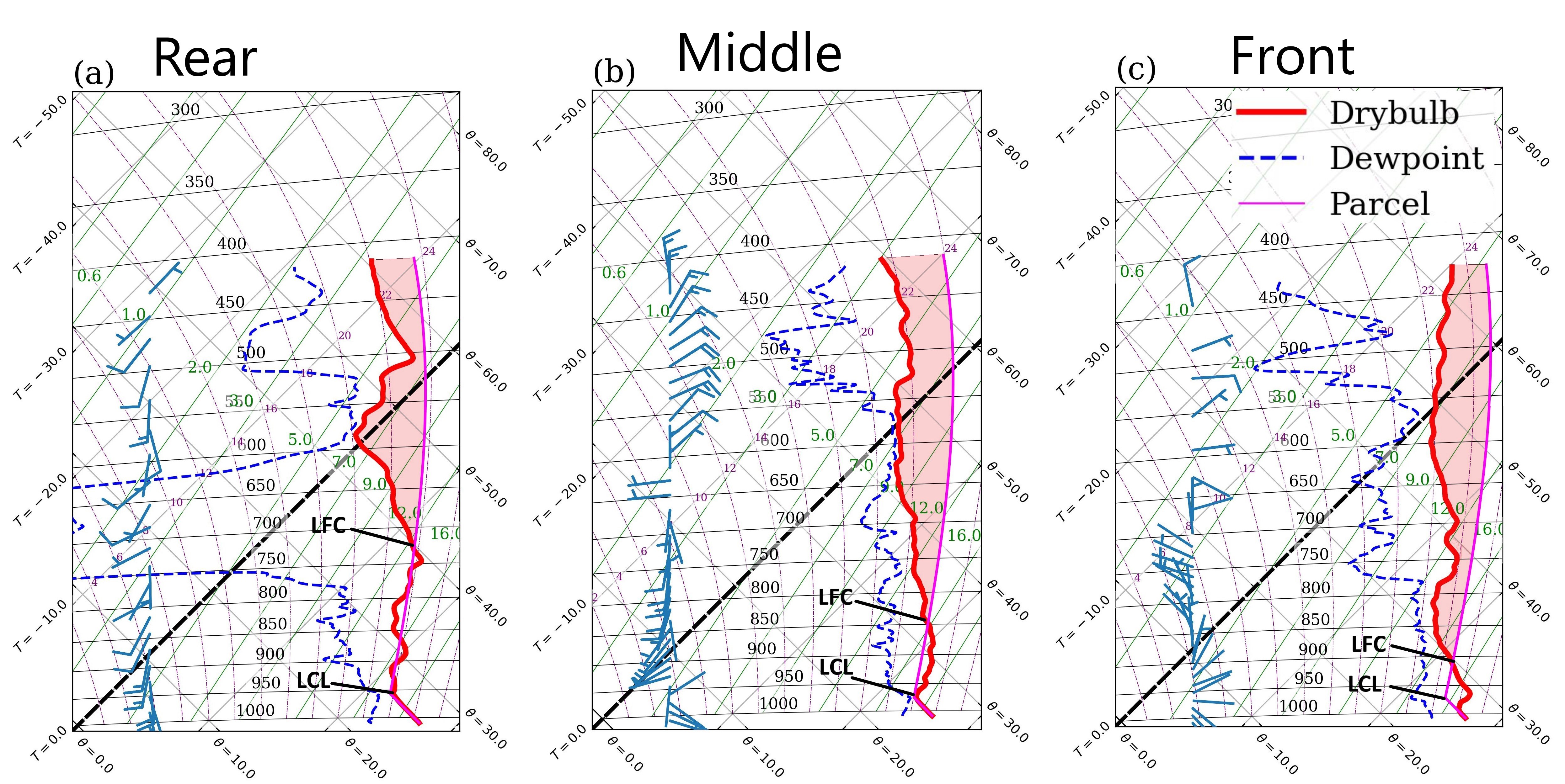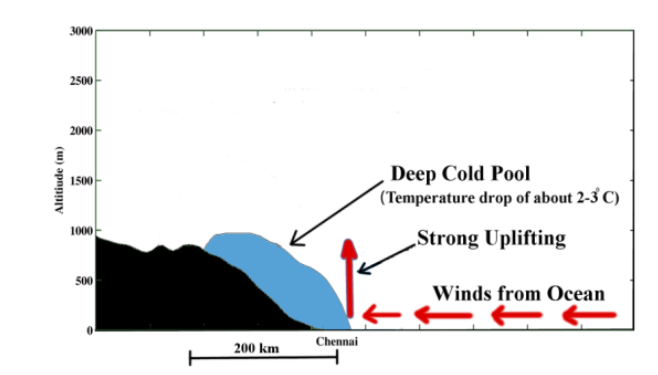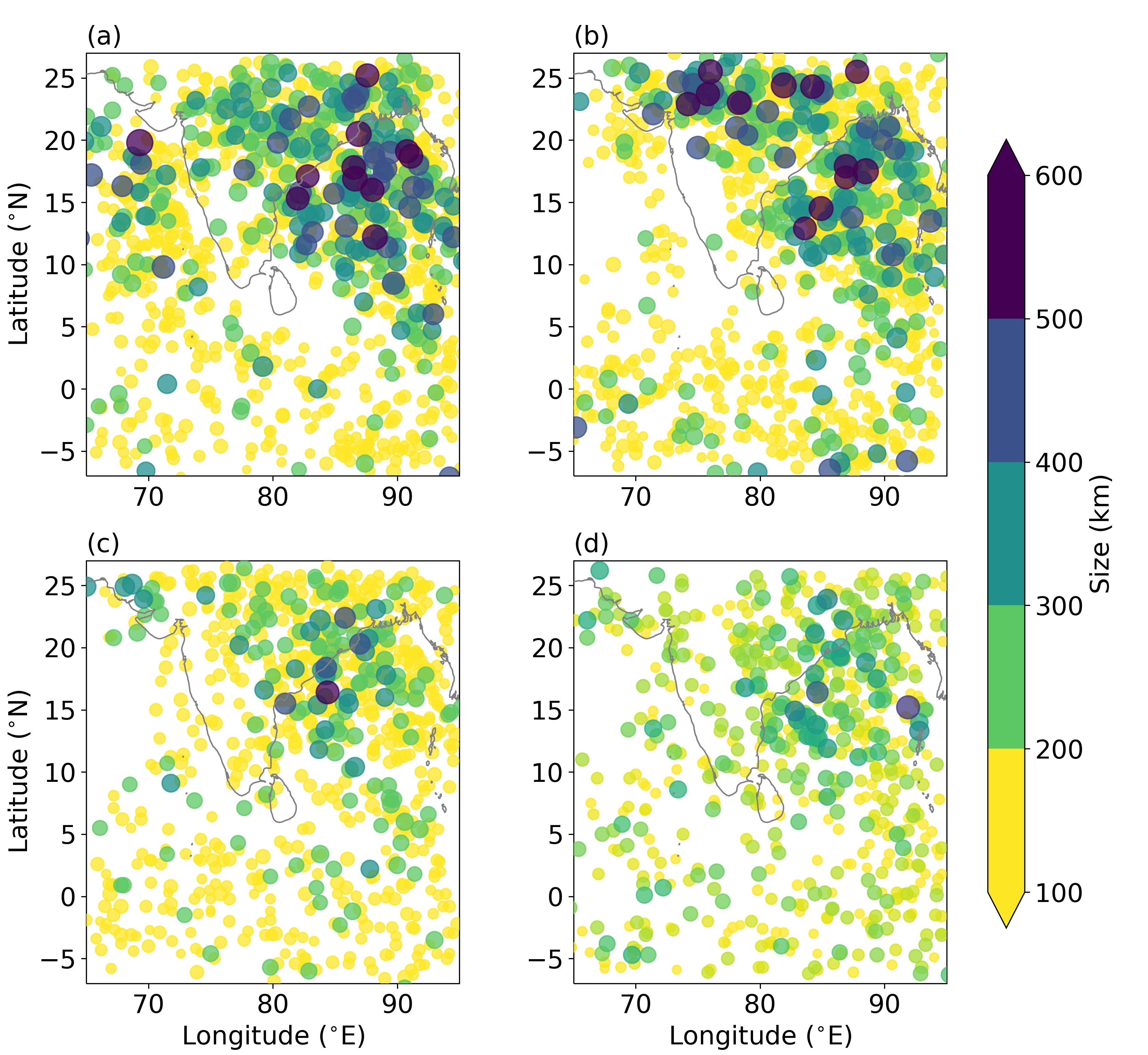My research is often motivated by societal needs to cope with climate vagaries. I am also curious to understand the fundamental working principles of our weather and climate. Therefore, my work has been indeed interdisciplinary and melded the 'Engineering' and 'Science' perspectives.
Print media articles on my research:
What caused the Dec. 1, 2015 Chennai downpour? , The Hindu
A look back into the December 2015 floods of Chennai, Research Matters
Reconnaissance of a Tropical Supercluster with Hurricane Hunter Aircraft
At the University of Notre Dame, my research is funded through the MISO-BOB project sponsored by the US Office of Naval Research (ONR). The overarching goal of MISO-BOB is to understand the interaction between monsoonal storms and the ocean. To this end, in situ field observations were collected using ships, buoys, aircraft, and weather balloons (radiosondes) over the Indian Ocean and the Bay of Bengal. The hurricane hunter aircraft (Hercules WC130J) of the US Air Force was used to collect observations from the storms during June 2018. The aircraft flew through a tropical cloud supercluster over the Indian Ocean and gathered data from the onboard instruments and dorpsondes at different locations. Analysis of this unique dataset revealed the internal structure of the supercluster, its cold pool, melting level, and similarities between the convectively coupled Kelvin waves.
Track of the Hurricane Hunter aircraft through the cloud supercluster

Dropsonde observations from the cloud supercluster

Ref:
Phadtare, J., H.S.J. Fernando, R. Krishnamurthy, J. M. Pérez Valentín, K. McLaughlin, G. Black, J. Dehart, A. Tandon, E., S.U.P. Jinadasa, G.S.Bhat. (2024) Aircraft Observations in a Tropical Supercluster over the Equatorial Indian Ocean during MISO-BOB Field Campaign. Sci. Rep. DOI:https://doi.org/10.1038/s41598-024-51527-4
Influence of Underlying Orography on Cyclonic Systems
The east coast of India is prone to extreme floods during the winter monsoon, e.g., the 2015 South India floods. The influence of the Western Ghats on west coast rainfall has been known for a very long time. However, the role of the Eastern Ghats on East Coast rainfall was recently discovered in a study by Phadtare (2018). Even though the Eastern Ghats lie about 200 km inland from the coast, the orographic effect is conveyed through the cold pool, a 'thermodynamic mountain'. In a weak background flow, the cyclonic storms in the tropics move westwards due to the planetary β effect. Therefore, the cyclonic storms that form over the eastern Indian Ocean - Maritime continent region tend to arrive at the east coasts of India and Sri Lanka. Some of these storms stall over the coast and cause catastrophic flooding for several days. The goal of this research is to identify the reasons behind the stagnation of these cyclonic storms so that we can better forecast severe flooding events and prevent the loss of life. Initial investigation hints that the weaker storms get blocked by the Eastern Ghats orography range (Phadtare, 2018). Currently, I am analyzing the vorticity budgets of the landfalling cyclonic storms to better understand the vertical propagation of the orographic effect.
Inundation of Chennai area photographed by the Indian Air Force rescue team on 2 December 2015. The upstream orographic blocking stagnated the rainstorm over Chennai, causing this flood (Ref).

Piling up of cold pool (a 'thermodynamic mountain') against the Eastern Ghats sorography.

Tilting of cyclonic vortex against orography.

Ref:
Phadtare, J. (under review) Influence of Underlying Topography on post-monsoon Cyclonic Systems over the Indian Peninsula. Meteorology .
Phadtare, J. (2018) Role of Eastern Ghats Orography and Cold Pool in an Extreme Rainfall Event over Chennai on 1 December 2015. Mon. Wea. Rev. , 146 (4). pp. 943-965.
Modelling Rainfall over the Western Ghats
The Western Ghats is one of the rainiest places on our planet. The low-level monsoon jet from the southwest brings loads of moisture over the west coast of India. The Western Ghats provide a mechanical uplifting mechanism for the advected warm and moist air parcels. Thus, the west coast of India is prone to life-threatening flooding during the summer monsoon months, e.g., the Mumbai flood in July 2005 and the Kerala flood in August 2018. My research at the National Centre for Atmospheric Science, University of Leeds, investigated the orographic effects of the Western Ghats on the West Coast rainfall and its representation in numerical models. It was concluded that a model resolution of O(1km) is needed to simulate the mean rainfall accumulation over the Western Ghats. However, even at this high resolution, models overestimate rainfall (by 50-100%) over the orography, especially during the phases of weak winds/offshore rainfall. This error stems from an anomalously weak orographic blocking effect in models.
Comparison of orographic blocking in radiosonde observations and 12-km, 4-km, and 1.33-km model simulations

Ref:
Phadtare, J., Fletcher, J.K., Ross, A.N., Turner, A.G., Schiemann, R.K., Burns. H., L. (under review). Unravelling the Mechanism of Summer Monsoon Rainfall Modes over the West Coast of India using Model Simulations, Q. J. Roy. Meteor. Soc. .
Phadtare, J., Fletcher, J.K., Ross, A.N., Turner, A.G. and Schiemann, R.K., 2022. Froude number-based Rainfall Regimes over the Western Ghats Mountains of India. Q. J. Roy. Meteor. Soc.
Organization and Life Cycle of Deep Cloud Systems in the Indian Summer Monsoon
Representation of clouds in the general circulation models is one of the biggest challenges for the atmospheric science community. Simultaneously resolving the full spectrum of the involved scales is computationally infeasible. Simulations from the cloud-resolving models (CRM) have shown some promising results recently. However, the problem is not just limited to computational power; our understanding of the physical processes in clouds is plagued by uncertainties. Therefore, there is a need to study real-world cloud processes and set a benchmark for CRMs. The high-resolution data from the geostationary satellites is useful for this purpose. During my PhD, I studied the life cycle of deep clouds of the Indian summer monsoon using INSAT-series satellite data. Special focus was on studying the cloud organization with and without the synoptic-scale forcing. An automated cloud tracking code was written for this purpose. Some of the questions addressed in this study are the following: Is there a systematic organization of MCSs within the monsoon depressions? In what aspects do the MCSs differ when the synoptic-scale forcing is strong and weak? Does the size spectrum of MCSs differ in different climatic conditions, e.g., ENSO?
Size of deep cloud systems in (a) June, (b) July, (c) August, and (d) September.

Ref:
Phadtare, J., and Bhat, G.S., 2019. Characteristics of deep cloud systems under weak and strong synoptic forcing during Indian summer monsoon season, Mon. Wea. Rev., 147(10), pp.3741-3758.